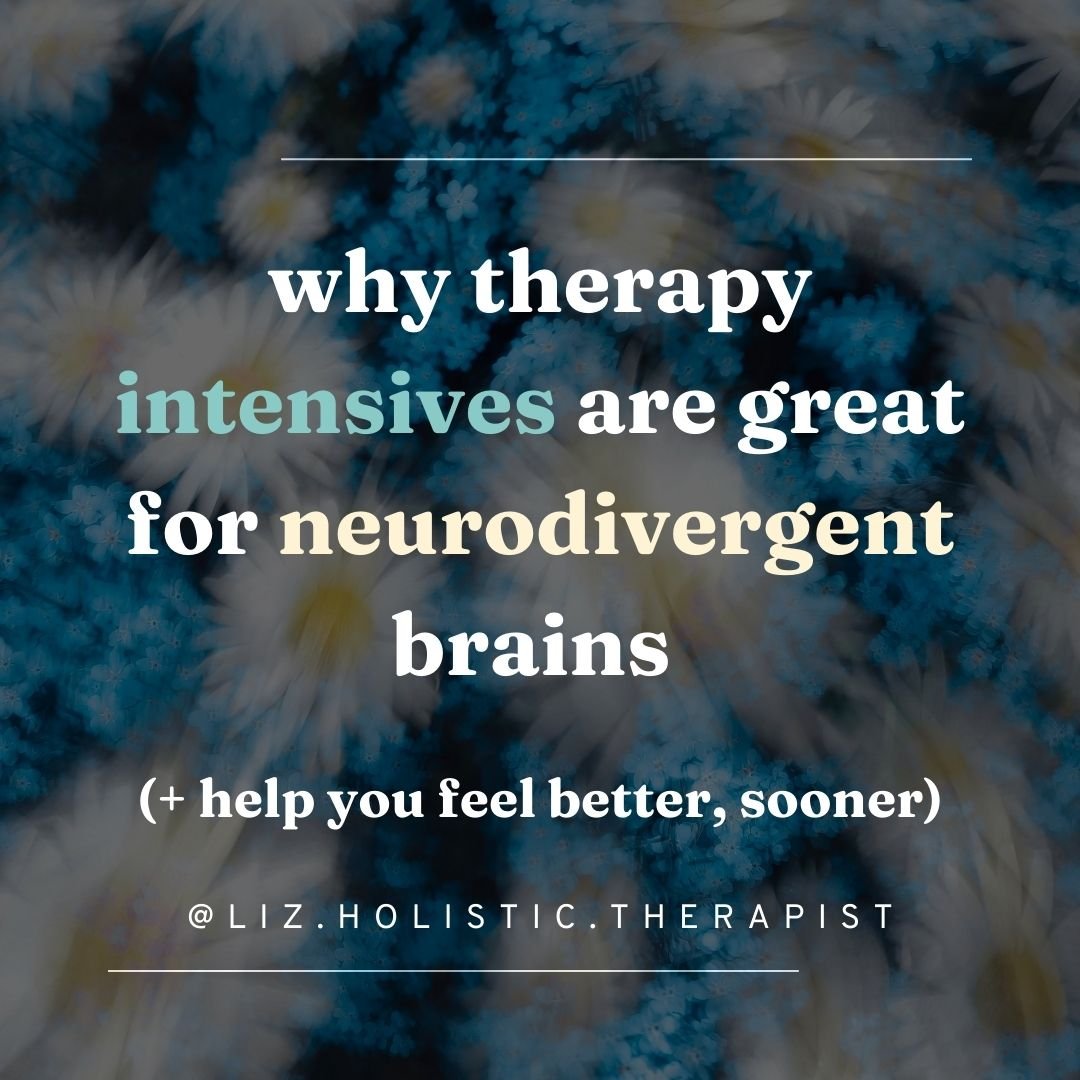What’s the Inner Ally Practice? | Resourcing in EMDR Therapy
Resourcing is the initial phase of the EMDR therapy protocol, designed to stabilize your nervous system and create a sense of calm and steadiness within yourself. Let’s delve into the Inner Ally practice — what it is, why it works, and how to create your own Nurturing, Protective, Playful, and Wise Figures.
What’s EMDR therapy?
EMDR therapy (Eye Movement Desensitization & Reprocessing) is a therapeutic approach that helps individuals process distressing and traumatic memories. By combining mindful awareness with bilateral stimulation, EMDR can facilitate healing without requiring much talking about the traumatic event.
Research has demonstrated that EMDR is significantly more effective than traditional talk therapy in treating anxiety, depression, and PTSD, due to its profound impact on brain rewiring and nervous system regulation.
EMDR therapy heals trauma… without making you talk about trauma the whole time.
Developed by American psychologist Francine Shapiro in 1987, EMDR involves structured protocols designed to help the brain reprocess memories, reducing their emotional intensity.
Following EMDR processing, individuals are able to recall the original distressing event from a healthy distance, experience a decrease in painful emotions, and shift negative self-beliefs (“I’m bad,” “It’s all my fault,” “I’m unlovable”) to neutral or positive ones (“I’m worthy,” “I’m learning to love myself,” “It wasn’t my fault”).
What’s resourcing in EMDR therapy?
Resourcing is the initial phase of the EMDR therapy protocol, designed to stabilize your nervous system and create a sense of calm and steadiness within yourself.
By helping you stay within your window of tolerance — a manageable range of emotional, physical, and sensory experiences — resourcing allows you to effectively process difficult material without becoming overwhelmed.
Resourcing practices involve focused mindfulness, imagination, creativity, or visualization. These practices can be enjoyable to create and practice, and there are many different types to choose from, including Calm Place, Container, Grounding Tree, and Healing Light Stream.
Today, we’ll delve into the Inner Ally practice.
What’s the inner ally practice?
We all need support on our healing journeys; none of us are meant to do this alone. This practice invites you to imagine the presence of a supportive being—whether it’s a person, animal, plant, entity, ancestor, deity, or a past or present version of yourself.
The act of imagining this ally (even if they’re not physically present or don’t exist in the 3D world) sends calming signals to your brain and soothes your nervous system.
Types of Inner Allies
Nurturing Figure
Imagine a warm, comforting presence who offers unconditional love and support.
Picture this figure gently holding you, offering words of encouragement, and providing a sense of safety and belonging.
Allow yourself to feel nurtured and cared for by this loving presence.
Protective Figure
Visualize a strong, powerful figure who shields you from harm and negative energy.
Imagine this figure standing guard, protecting you from threats and providing a sense of security.
Feel a sense of safety and confidence knowing that this protective figure is watching over you.
Playful Figure
Picture a lighthearted, joyful figure who brings laughter and joy into your life.
Imagine this figure engaging in fun activities with you, making you smile, and reminding you to enjoy the lighter side of life.
Allow yourself to relax, have fun, and embrace your playful side.
Wise Figure
Imagine a knowledgeable, experienced figure who offers guidance and insight.
Picture this figure sharing words of wisdom, offering advice, and helping you navigate life’s challenges.
Feel a sense of clarity and direction as you receive guidance from this wise figure.
Examples of Inner Allies
Nurturing Figure
loving grandmother
comforting teddy bear
gentle breeze & sunshine
deity with healing powers
warm cup of tea
Protective Figure
superhero
loyal guardian dog
sturdy oak tree
powerful shield
fortress
Playful Figure
mischievous puppy
fairy
younger version of yourself
trickster
fluffy kitten
character from your favorite children’s book
Wise Figure
wise old owl
seasoned mentor
guiding star
ancient tree
wizard/witch
elderly sage
How to Practice Inner Ally
You can have multiple inner allies that you turn to for different needs. In some moments, a wise human figure might be helpful. In other moments, you might seek out playful energy from an animal.
It can be powerful to create a team of allies and imagine them standing around you in a circle.
Draw a picture of your inner ally and look at it whenever you need comfort, guidance, or kindness.
Or write a letter to yourself from the perspective of an inner ally. Often, we are kinder to ourselves when we imagine the words coming from someone else.
You can also incorporate your inner allies into your meditation or mindfulness practices (i.e., connecting with their presence while walking, stretching, listening to music, journaling, or wandering in nature).
Looking for an EMDR therapist with a holistic, gentle, and creative approach?
Take the first step toward healing trauma, restoring your nervous system, and feeling like yourself again.
SCHEDULE A FREE CONSULTATION TO WORK WITH ME
{FOR COLORADO RESIDENTS}
Therapy services are available virtually, for adults & couples located in Colorado.
About the Author
Liz Zhou is holistic trauma therapist providing virtual therapy services in Colorado. She helps highly sensitive, neurodivergent adults and couples heal from the past and connect with their authentic selves. Liz’s specialties include EMDR, IFS, psychedelic integration, and therapy intensives.





